I might be being presumptuous here, but if I asked people if they had ever heard of Aberystwyth’s ARP strong room, I’m willing to bet most would say no. However, if I asked the same people if they had ever heard the rumour that there is a network of tunnels under Aberystwyth where the crown jewels and other precious artefacts were housed during the Second World War, I bet I’d get a more positive response.
It turns out the rumour is true, sort of.
There is one tunnel – known as Aberystwyth’s ARP room – at the bottom of National Library land, and many precious items were indeed stored there to keep them safe from bombing, but there is no evidence to suggest that the crown jewels were among them. I learnt all of this and more during a fascinating afternoon with historian, Will Troughton.
Will, who also works for the National Library, is a font of information about the history of Aberystwyth, including this tunnel.
The National Library, as part of the Aberystwyth at War project, opened the tunnel for a limited number of people to take part in a tour. I was lucky to be one of those people, and I was fascinated to find out exactly where it was (Llanbadarn Road) and what it looked like (basically, a horse-shoe).
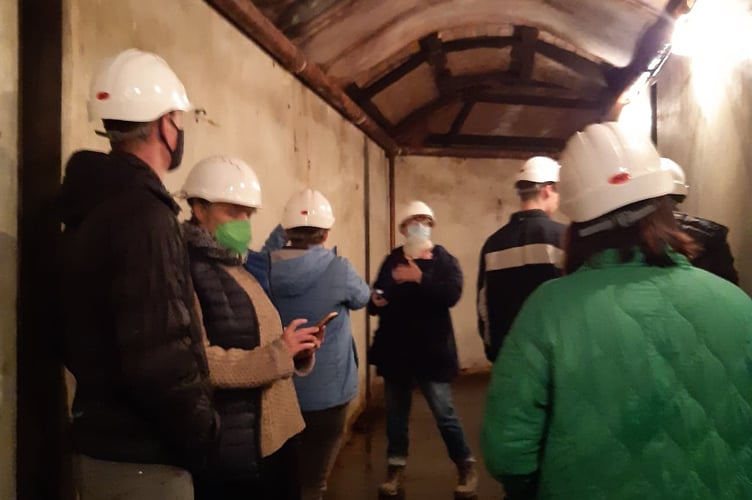
According to Will, the Right Honourable W A Ormsby Gore, the First Commissioner of Works, suggested in 1933 that certain national institutions should have, in the event of war, a mechanism to protect their most valuable treasures.
Nothing was done until autumn 1937 when the matter was raised at a meeting of the council. The National Library’s then vice president and chairman of the Building Committee was Sir Evan D Jones, a prominent engineer who suggested building an underground repository on library land.
“The site chosen was known as Grogythan ‘Hangman’s Hill’ – though I have seen no evidence that it was ever used as such,” Will explained. “It was decided that a horseshoe shaped chamber be tunnelled into rock near the library. Plans were drawn up dated March 1938 and work began in August 1938 – the month before the Munich Agreement was signed – and the work completed on October 30 1939.
“The idea was that the NLW and British Library would have half the storage space each, with access exclusively to staff of the relevant institution. A grille would separate them. Costs would be shared equally. This was not without problems though.”
On 25 October 1938, the tunnel was cut into a steep escarpment of loose Cambrian rock in well defined strata which fell away sharply to the North East. The stone is a hard shale which resists picks. (All tunnelling had been done by blasting). The volume excavated was notably greater than the original plan.”
“This lead to a greater void between the skin wall and the rock face,” said Will.
“The west boundary wall was noted as being the wettest as the strata lead uninterrupted to the surface.
“Two features sprang to immediate attention – the tendency of the rock roof to fragmentation and the fact water will always be present between the rock face and the skin wall.
“The good news was that the overhead protection was adequate against all but the heaviest bombs and armour piercing shells.”
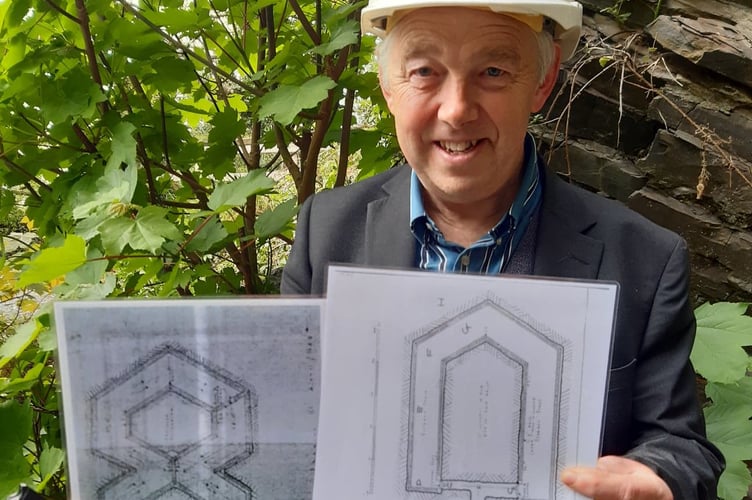
At that time thought was given to extending the tunnel to provide more storage.
Three ideas were put forward. The first was to cut through the central solid area but that would have made the roof unsafe.
The second was to extend the tunnels symmetrically. But that would have lead to congestion in event of an emergency and made it difficult to ventilate.
Dig a gallery from one of the side passages – the east side was suggested.
“In fact, the idea adopted was to create a hexagonal extension at the back of the tunnel,” said Will.
This was commenced, however, there was further issues, as Will explained.
“On February 15th 1939 an inspection was undertaken by a leading civil engineer. As a result of his report work on the extension stopped immediately and a number of recommendations regarding the strengthening of the floor, roof and walls was undertaken. This took time and resources and resulted in the tunnel we see today. Neither the National Library of Wales nor the British Library could afford to carry on with the extension, especially as the ground was of a poor state.
“Also by this time it could be seen that the chamber would be needed sooner rather than later as Hitler became increasingly belligerent.
“Although completed in 1939 the chamber had to be dried out. Electric heaters and two fans were installed – one inlet fan and one outlet fan. Temperature was controlled by a thermostat. The whole apparatus worked continually until May 23 1945, although one of the recommendations was that duplicate parts of the whole system be purchased at the outset to replace any faulty part.”
Engineer Charles Holden visited in January 1940 and after monitoring conditions for three months reported that: “The feeling of the chamber was one of mild, almost warm, dry atmosphere and the air pleasant. There was clear evidence of condensation having run down the walls but generally speaking the conditions were good”.
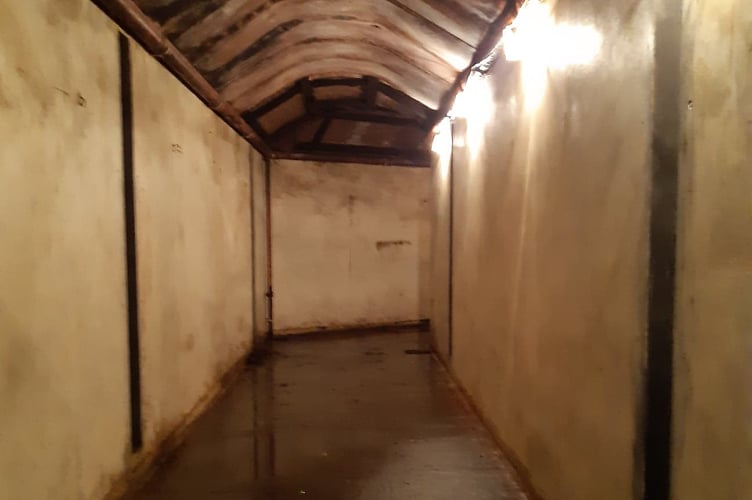
Water was seen to enter through the brick arched roof but conducted to the gutter and drains by the Masonite ceiling.
Temperatures could be maintained between 55 and 64 degrees (60-70 degrees is recommended for books).
Humidity was around 55-64 per cent (50 per cent is regarded as ideal for books).
It was recommended that shelves be placed along centre of each corridor, not against the walls. But what was stored there?
“Details are sketchy as much British Library material was stored in the National Library itself,” said Will.
“But amongst what was stored, probably here, were Leonardo da Vinci sketches, Scott’s Journals, letters signed by Drake, Nelson and Raleigh, perhaps some Chaucer, Cromwell, Shakespeare, Codex Sinaiticus, Greek Bibles (7th and 8th Century) and material from 10 different institutions in the National Library itself.”
Delwyn Tibbott’s father was deputy librarian Gilda Tibbott. Delwyn said: “Every night my father, a policeman and a member of the British Library staff, would go down to the tunnel to ensure that everything was as it should be.”
Sadly, it seems he did not reveal exactly what was stored there, but at least we know that the rumours are true, and Aberystwyth played an important part in keeping artefacts safe during the war.
It was fascinating to tour the tunnel. I hope it opens to the public again. If it does, I highly recommend a visit.


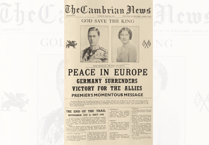
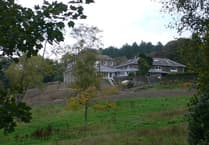

Comments
This article has no comments yet. Be the first to leave a comment.